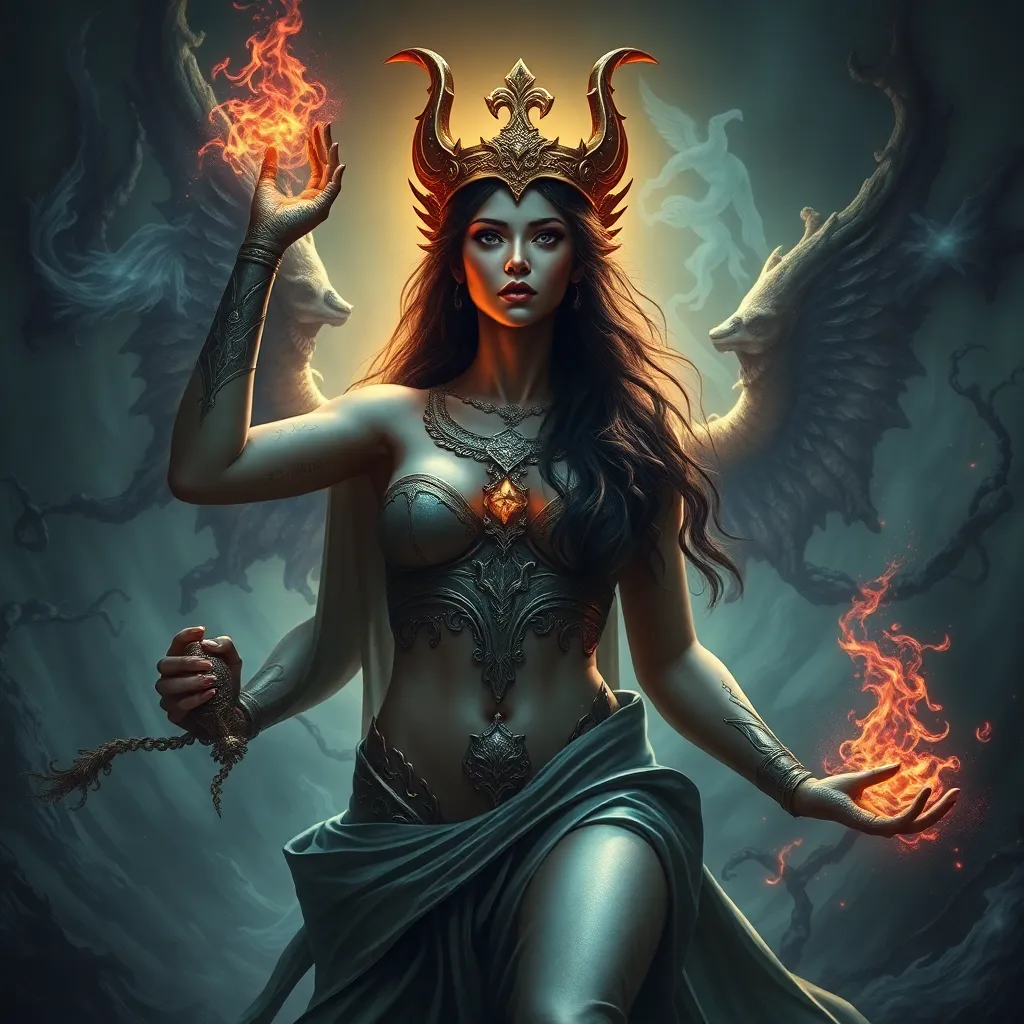The Lamia’s Warning: Interpreting the Moral Lessons and Cautionary Tales Embedded in Her Legend
I. Introduction
The Lamia legend is one of the most intriguing tales from ancient mythology, weaving together themes of love, loss, and vengeance. Lamia, often depicted as a beautiful woman turned into a monstrous figure, serves as a cautionary tale that warns against the dangers of unchecked emotions and societal judgment. Mythology plays a crucial role in conveying moral lessons, allowing cultures to explore complex human emotions and experiences through allegorical figures.
This article aims to delve into the moral lessons and warnings embedded in the Lamia’s story, examining her tragic fate and the implications of her legend in both ancient and modern contexts.
II. The Origin of the Lamia Myth
The origins of the Lamia myth can be traced back to ancient Greece, where she was often described as a beautiful queen of Libya. Her story varies across different cultures, reflecting the values and fears of the societies that told her tale. In some accounts, she is a child-devouring monster, while in others, she is a tragic figure cursed by the gods.
Throughout history, the Lamia has appeared in various literary works, from the writings of Plutarch and Ovid to modern adaptations. Each interpretation adds layers to her character, illustrating the societal concerns surrounding femininity, power, and vengeance.
III. The Transformation of Lamia: From Queen to Monster
Lamia’s transformation from a queen to a monster is a poignant backstory that highlights themes of jealousy and revenge. Initially, Lamia was a woman in love with Zeus, who bore him children. However, after losing her offspring to Hera’s wrath, Lamia became consumed by grief and anger. This tragic fate led to her metamorphosis into a creature that terrorizes others, embodying the pain of her loss.
The symbolic significance of Lamia’s transformation is profound. It serves as a reflection of how unchecked emotions can lead to destructive outcomes, turning love into hatred and beauty into monstrosity.
IV. The Role of the Lamia as a Cautionary Figure
Lamia stands as a cautionary figure, warning against the dangers of unchecked emotions and vengeance. Her story illustrates the consequences of desire and obsession, showing how these feelings can corrupt one’s nature and lead to tragic outcomes.
- Unchecked Emotions: Lamia’s transformation serves as a reminder of the dangers of allowing emotions to spiral out of control.
- Desire and Obsession: Her obsession with revenge against those who wronged her ultimately leads to her own isolation and suffering.
- Societal Fears: Lamia can be viewed as a representation of societal fears regarding femininity and power, reflecting the anxiety that arises when women assert their agency.
V. Moral Lessons Derived from the Lamia’s Story
The Lamia’s story offers several moral lessons that remain relevant today:
- Empathy and Understanding: The tale encourages individuals to cultivate empathy towards those who have suffered, rather than judging them for their reactions.
- Dangers of Stereotyping: Lamia’s demonization highlights the dangers of stereotyping and the consequences of viewing others through a narrow lens.
- Reflections on the Human Condition: The trials faced by Lamia resonate with the human experience, serving as a reflection of the complexities of love, loss, and revenge.
VI. The Lamia in Modern Interpretations
In contemporary literature and media, the Lamia archetype has evolved significantly. Modern adaptations often reimagine her character, exploring themes of empowerment and resilience. These reinterpretations challenge traditional narratives, allowing for a more nuanced understanding of her story.
Some notable modern interpretations include:
- Literature: Novels and poetry that delve into the emotional depth of Lamia, portraying her as a complex figure rather than a mere monster.
- Film and Television: Adaptations that incorporate elements of horror and fantasy, often emphasizing themes of vengeance and female empowerment.
- Art: Visual representations that capture the duality of Lamia’s beauty and monstrosity, reflecting societal anxieties about femininity.
These modern interpretations resonate with today’s societal issues, such as the stigma surrounding mental health and the challenges faced by women in asserting their identities.
VII. Comparing the Lamia Legend with Other Cautionary Tales
The Lamia legend shares similarities with other mythological figures, such as Medusa and Lilith, who also embody cautionary tales about the dangers of female power and societal fears. These figures often serve as warnings against the consequences of anger and revenge.
Cross-cultural parallels in moral storytelling can be observed, as many societies utilize similar themes to convey moral lessons. The enduring nature of these cautionary tales highlights their significance in human culture, reflecting timeless concerns about human behavior and morality.
VIII. Conclusion
In summary, the Lamia’s story offers profound moral lessons that continue to resonate in contemporary society. Key takeaways include the importance of empathy, the dangers of stereotyping, and reflections on the human condition. The Lamia’s warning serves as a reminder of the complexity of human emotions and the potential consequences of unchecked feelings.
As we navigate our lives, the power of legends like Lamia’s can teach and caution future generations, encouraging a deeper understanding of ourselves and the world around us.



